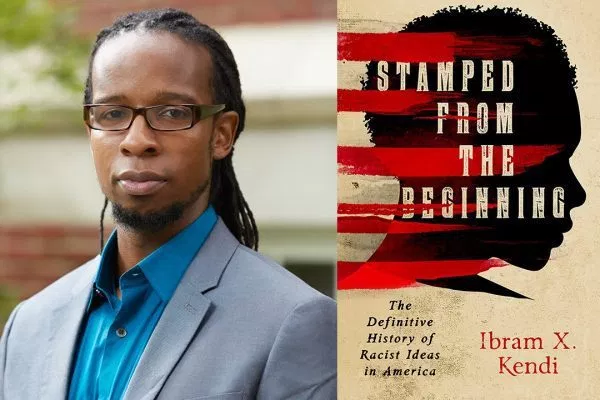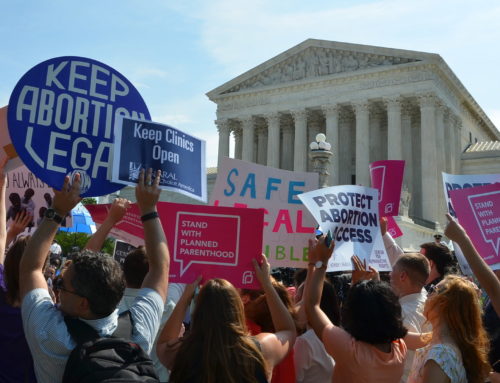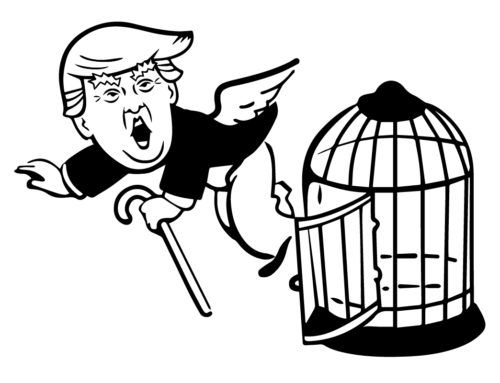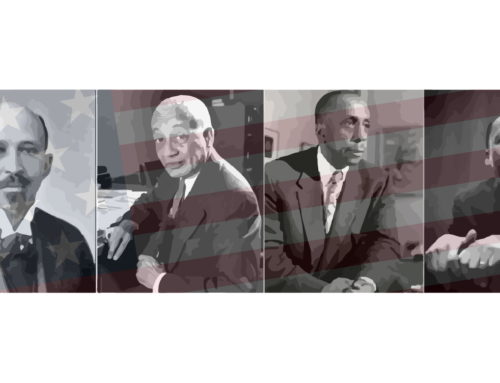By: Jeremy Kingston Cynamon
We tend to think that hierarchical institutions like slavery emerge as the result of racist and hateful ideas. Ibram Kendi’s new book Stamped From the Beginning, offers an intriguing and far reaching historical challenge to that narrative. Kendi reverses the causal arrow and argues that rather than racist ideas causing discriminatory practices, racist ideas are more accurately understood as ex post justifications of those practices. In other words, hierarchical institutions emerge first – owing to self-interested economic, political, and social reasons – and are then justified in theory by clergy, intellectuals, and other elites.[1] Perhaps Kendi’s most surprising claim is that racist ideas penetrate even the minds of liberal reformers, activists, and theorists, who are otherwise considered progressives. Here he cites W.E.B. Du Bois and Barack Obama amongst many others, ultimately suggesting that racist ideas infiltrate nearly every discourse and sphere of social life.
Kendi’s book is, as its subtitle suggests, an incisive and thoroughgoing study of the history of racist ideas in America. But it is more than that; Stamped From the Beginning is also rife with implications for political theory. It has much to say both about the ongoing discussion about distributive justice, and about how we conceptualize freedom. Its central argument, which points to the need to address deep structures of inequality, can be interpreted as particularly troublesome for liberal theories of distributive justice. This same argument also highlights some important limitations of the typical bifurcation of freedom into its positive and negative variants.[2]
Segregationists, Assimilationists, & Anti-Racists
At its core Stamped from the Beginning is a history of the development and diffusion of racist ideas in America. Kendi categorizes individuals according to the types of ideas they hold about race and race policy into three groups. The first he dubs “segregationists”. This group consists of those who are the easiest to deem ‘racist,’ namely persons who wholly blame Blacks for whatever inequality might exist between the and other groups. Segregationists either choose to ignore the fact, or deem it morally insignificant, that formally equal rules always have disparate impact when applied to differentially situated groups. In other words, the segregationist refuses to acknowledge that a law which is procedurally applied ‘equally,’ produces differential burdens on groups depending on the amount of resources they have (or other factors).
To take a germane example, we often hear that the college admissions process should not consider race, because equal treatment requires that all students should be judged only on their academic records, or ‘merit’. On this line of thought, if Black students fail to gain entry to colleges, that indicates the inferiority of those students vis-a-vis their non-Black counterparts. This is typical segregationist thinking because it does not consider what we might call ‘background disparities’ in resources. For example, the Black students might have had an inferior education, lacked the resources for formal exam prep, or have had other obligations to their family (such as work obligations) that limited the amount of time they could devote to their studies. The segregationists choose to ignore to all of these contingencies, and instead attribute differences in outcomes to qualities intrinsic to Blacks. In other words, segregationists think that Black are innately inferior to other races. As such, Blacks are wholly responsible for all disparities in outcomes.
The second group Kendi calls “assimilationists”. They hold a more moderate position, but nonetheless exemplify a form of racism. Assimilationists assume that disparities in achievement – as in the college admissions case – are indicative of both a failure of Blacks and a failure of policies. Unlike the segregationists however, the assimilationist does not attribute these Black failures to biological factors, but rather to social practices, which they are nonetheless deemed responsible for. For example, an assimilationist might suggest that the ‘culture’ in Black neighborhoods did not foster an environment that valued success in education, and that the responsibility for this ultimately lies with the Black community. But they would also hold that certain patterns of discrimination worsened the problem. Thus, unlike the segregationist, the assimilationist places the blame for differential outcomes upon structural conditions which whites are ultimately responsible for, and upon patterns of behavior which Blacks are responsible for.
The final group that Kendi identifies, he labels “antiracists”. This group has always been the fringe in America, and poses the only real opposition to the racist positions of the segregationists and assimilationists. The antiracists believe that disparities between groups are wholly the result of discriminatory policies and reject any notion of innate differences, much less hierarchy, among racial groups. They “truly believe that racial groups are equal” so they also “believe that racial disparities must be the result of racial discrimination.”[3] Continuing with the college admissions case, an antiracist would argue that if the process admits only a few Black students, this says nothing about the intrinsic qualities of Blacks, but instead is evidence of unequal background conditions, which are themselves the result of discriminatory rules and practices. For the antiracists then, disparities in outcomes are wholly the result of unequal social structures.
Implications for Theories of Distributive Justice
There are of course a great many distinct approaches to distributive justice which fall under the rather broad framework that we call ‘liberal’. It is both possible and useful, however, to distill three methodological features that such theories share.[4] First, such theories must define which persons it targets. Is it a narrow community? All citizens? All humans? Second, the theorist defines a good, or class of goods, for redistribution.[5] These might include such things as access to healthcare, education, political liberties, wealth, income, etc. Finally, the theorist specifies a distributive logic or principle for the good, or class thereof. They might, for example, say that access to some good X should be distributed equally, that everyone should meet some level of sufficiency, or that distribution should be arranged to maximize efficiency.
John Rawls’ widely celebrated work A Theory of Justice is a prime exemplar of this approach. He argues that certain goods – which he calls ‘primary goods’ – should be distributed according to the maximin principle, wherein inequalities are only justified if they are to the absolute benefit of the least well off. In one of the many critiques of Rawls, Michael Walzer argues that each good must be assigned its own particular logic of distribution. For Walzer, it is a mistake to distribute all ‘primary goods’ according to the same logic, because the goods Rawls has classified as such are qualitatively different. He argues instead for a plurality of discrete ‘spheres’ in which each good is assigned its own logic of distribution appropriate to its qualities. Ultimately, though, both approaches avoid targeting the underlying structures of inequality which produce disparate distributive outcomes.
The same can be said of the libertarian approach to justice. Unlike Rawls, who we can think of as a liberal egalitarian, Robert Nozick, perhaps the most influential libertarian theorist of the last century, argues that if a process is formally equal, then disparities in outcomes are beyond the purview of distributive justice. As long as the procedures – which for him means free market exchange – are applied in the same manner to all persons, then they must be fair, and any remaining differential outcomes are the responsibility of the individuals to which they are applied.[6] For Nozick, then, fair procedures that create differential distributive outcomes for certain racial groups, indicate problems with the group itself, rather than the procedure or the background conditions upon which it operates. The only exception for him is the case in which person’s differential starting point is itself the result of past injustices. He can thereby admit that some inequalities might result from unfair historical conditions, but for the most part thinks these inequalities are the result of free interaction between individuals, and as such are not morally problematic. Thus, according to Kendi’s schema, Nozick is an ‘assimilationist’ who overlooks background inequalities to which formally equal procedures are blind. Rawls, in arguing for the liberal egalitarian position, notes that pace Nozick formally equal rules are not substantively equal because they are not sensitive to background inequalities. On these grounds, Rawls determines that procedures for redistribution must be sensitive to differentially situated persons.
But Kendi’s analysis of the history of racist ideas shows us the limit of even Rawls’ more sophisticated approach.[7] For Kendi, racist ideas are the result of social structures that produce a material need for a conceptual or intellectual defense of the institution. That is, those who benefit from a hierarchical institution, tend to produce intellectual justifications for that institution. The mere redistribution of goods that the liberal approach takes to be the central pillar of any worthwhile theory of justice entirely overlooks the hierarchical structures that Kendi is concerned with. Indeed, the book’s thesis that institutions generate the ideas that are then used to defend them, has significant implications for these liberal theories of justice. Most importantly, it suggests that a focus on procedures or even on distributive outcomes, while remaining blind to the structures that produce those outcomes will fail to address the source of racist ideas. In order to remedy the underlying inequalities in our society, and thereby halt the production of racist ideas, a theory of justice must address the structures which create those inequalities, rather than focusing on papering over their disparate impacts. Liberal approaches to justice, because they ignore the hierarchical institutions that operate behind the procedures, are unable to adequately do so.
Not only does Kendi’s book highlight a crucial limitation of the liberal approach, it also suggests that such approaches might even further ingrain racist ideas. This is because liberal approaches to justice need to operate recurrently, given their inability to fix the causes of distributive inequalities. In other words, such approaches need to redistribute goods, not just once, but every so often, since, without changes to the underlying structures which create inequalities, the alleviation that they provide via compensatory redistribution will ultimately fade away. Their approach is akin to treating a gunshot victim by giving them morphine, rather than removing the bullet lodged inside them. Though the morphine might help temporarily, because the cause of the pain remains unaddressed it will eventually resurface.
Moreover, in the United States this redistribution will flow, generally, from white communities to communities of color, and this might very well have the unintended effect of sowing further tensions between those groups. For instead of being recognized as equals, groups that are targeted to receive redistributive benefits will be further stigmatized, and racist ideas will become further entrenched. As such, the liberal approach to distributive justice, though it certainly alleviates some differential material burdens, does so at the possible cost of increasing the prevalence of racist ideas.[8] Its approach makes it appear as though the ‘assimilationists’ are correct, because each redistribution of goods has the potential to undo itself and culminate once again with inequalities. For the liberal who chooses to ignore background structures which produce those inequalities, it thus seems as though the disparities that reappear even after one (or multiple) redistribution(s) of goods are the responsibility of those groups who are, yet again, worse off.
Freedom
Though perhaps less drastic than its repercussions for theories of distributive justice, Kendi’s book also provides some interesting implications for how political theory conceptualizes freedom. Following Isiah Berlin’s famous essay Two Concepts of Liberty, the trend in mainstream liberal political theory has been to divide freedom (or liberty) into its positive and negative variants.[9] Positive freedom is conceptualized as self-legislation, i.e. authoring the rules that govern oneself. We inherit this conception of freedom – often called ‘autonomy’ – from the tradition of Rousseau and Kant. As Berlin describes it, positive freedom is the “freedom which consists in being one’s own master” that allows one to be a “doer…self-directed and not acted upon by external nature or by other men”.[10] By contrast, negative freedom is conceptualized as the absence of external interference or coercion. As Berlin puts it, negative freedom creates an “area within which a man can act unobstructed by others”.[11] We inherit this conception from the tradition of Hobbes, Locke, and Mill.
Conceptualizing freedom in this way is undoubtedly useful as a starting point for normative political theory. However, Kendi’s book subtly highlights some concerns with the bifurcation that require further attention. First, negative freedom is worth little without economic agency. Second, a fitting institutionalization of negative freedom itself requires some form of positive freedom. And third, because of our overzealous focus on subjective conditions of freedom, we tend to overlook the crucial role of intersubjective moments of recognition that are required for one to gain access to both variants of freedom. As should become evident momentarily, all three of these points are deeply intertwined.
The liberal tendency to underestimate the role of economic agency in making use of one’s freedoms has long been pointed out by socialists and other leftist critics of the status-quo. Having the negative freedom – i.e. the legal right to perform some action – they say, does not mean that one is substantively free to do so. I might be formally free (no legal impediment) to buy a loaf of bread, but if I am broke, then I lack the substantive freedom to do so. The basic idea here is that the negative space of freedom that one is legally entitled to is worthless if one lacks the means to make use of that space. In other words, my realm of potential freedom – in this negative sense – might be extremely expansive, but without the economic means to make use of this space my effective or substantive freedom is nil.
Kendi points to this issue at multiple junctures throughout the book, but it comes across most powerfully in the chapters on Reconstruction. After the Civil War Blacks explicitly recognized this problem and consequently demanded they be given land in addition to the formal rights and liberties they were to gain. Their argument was simple; without economic agency, without the means to make use of their new freedoms, they would remain substantively unfree. “Do not abolish slavery and leave us landed. Do not force us to work for our former masters and call that freedom” they proclaimed.[12]
Indeed, Blacks made an explicit distinction between “abolishing slavery” and “freeing people” –– the distinction between being given legal rights which create a formal space of negative liberty, and having the economic agency to actually make use of that space. It’s worth teasing out the multiple implications here. First, in making this distinction Blacks were demanding that some category of economic agency be integrated into the bedrock of negative freedom. In other words, they were asking for the capacity to make effective use of the formal space that their new rights and privileges provided them. Second, and perhaps less obviously, by making this distinction and actively challenging the legal-policy status quo, Blacks were simultaneously asserting their demand for positive liberty.[13] That is, by arguing that the norm they were to be governed by was flawed, they asserted their right to partake in their own governance. In this case, then, the demand for an amendment to the concept of negative liberty itself entailed a demand for positive liberty.
Ultimately however, Reconstruction saw the distinction between positive and negative freedom turned against Blacks. While they were finally granted the formal space of negative freedom, attempts were made to separate that from positive freedom. The famed abolitionist William Lloyd Garrison, for example, argued that “suffrage was a ‘conventional right…not to be confused with the natural right’ to liberty.”[14] Here Garrison distinguishes between negative freedom as a ‘natural right’ and positive freedom through suffrage as somehow qualitatively distinct. While Blacks might be owed negative liberty in virtue of their humanity, he argued that they were not also owed its positive variant. Thus, even while gaining one form of freedom, an effort was underway to maintain a hierarchical distinction between the freedom of Whites and Blacks.
This is indicative of a general trend that Kendi brings to our attention. At each juncture where Blacks were awarded a new form of freedom, a simultaneous effort was made to ensure that such freedom remained somehow lesser than that afforded to Whites. When Blacks gained negative freedoms, they were left without economic agency. When they pushed for economic agency to make substantive use of their negative freedom, they were barred from positive freedom.
In my view, the phenomenon here is best understood as the movement from non-recognition, to partial recognition, and eventually to full recognition. Enslaved Blacks were not recognized as full citizens nor as full humans. As such, they were not deemed entitled to negative or positive forms of liberty. It is this moment of social recognition – the moment wherein society chooses to recognize a group of persons as partial members or as full members – that is too often understated in our theoretical discussions about freedom. Putting aside for the moment the problem of economic agency, which I have argued renders both positive and negative freedom rather fruitless, there remains a glaring systematic process whereby persons are denied both freedoms. This is done by simply refusing to recognize those persons as group members, or of even having the capacity to be group members. Both happened to Black Americans.
As slaves, Blacks were denied recognition in terms of their humanity. As sub-humans, they were not even owed man’s ‘natural right’ to freedom. So, while Kant may have declared that in virtue of their humanity all individuals are owed dignity and freedom, this philosophical achievement was of little consequences to those humans who were not recognized as part of ‘humanity’. We tend to forget that even our categories firmest seeming, such as those which supposedly track biological traits, are amorphous enough to be rendered neutral by the legerdemain of conceptual thought. Kendi continually reminds us of this propensity by using a host of concrete examples to demonstrate the multifarious ways in which theory can be manipulated to support material interests. It is here, in the basic denial of the humanity of human beings, that the point comes across most forcefully. For if a category that appears to be wholly determined by nature can be easily deployed to support the interest of those in power, then all categories are suspect. Even someone like Kant can say, apparently without sensing his own hypocrisy, that: “humanity is at its greatest perfection in the race of whites” while offering philosophical arguments that defend the moral equality of all humans.[15]
These social recognitional moments that both negative and positive freedom require are often treated as a settled problem.[16] But for Blacks and many other oppressed groups this struggle to gain the social recognition that group membership requires is no marginal matter. One only gains negative freedom if they are deemed a citizen – i.e. a member of a legal community who, in virtue of their membership, is owed certain rights and privileges. It is these juridical constructs that can be withheld or given at the whim of the dominant or insider group, which create the space of negative freedom. Furthermore, the recognitional moment associated with gaining group membership for the rights and privileges of negative freedom, can be, and often is, regarded as distinct from the recognitional moment associated with positive freedom. As Kendi shows us, this was the case with Blacks after the Civil War. Though Blacks were afforded property rights (part and parcel of negative freedom), this was treated as a matter distinct from suffrage (a form of positive freedom).
The recognitional moment here splits into two. Now, in the first moment of recognition the group admits members but gives them only a partial status – incomplete membership. Though they are awarded some space of negative freedom, they are not afforded the economic means to make effective use of that freedom, nor are they awarded positive freedom. And without positive freedom, the demand for substantive rather than formal negative freedom is relegated from the discourse. In other words, without the ability to participate in government, Blacks demand for substantive negative freedom remained a mere demand rather than a reality. This meant that not only were Blacks denied positive freedom, their new negative freedoms remained purely formal.
While these recognitional issues might have been solved, or at least settled for the moment, the matter of economic agency remains. Blacks are still disproportionately worse off economically than their non-White counterparts. And this means that although they are formally equal in terms of both their positive and negative freedoms, Blacks remain substantively less free across America.
Jeremy Kingston Cynamon is a PhD candidate in Political Theory at Brandeis University. He did his undergraduate work in Political Science at UC Berkeley. You can follow him on Twitter @__JKC__.
Image: Ibram Kendi, and the cover of Stamped from the Beginning
[1] Kendi, Ibram. Stamped from the Beginning: The Definitive History of Racist Ideas in America. Nation Books, 2016. [9-10]
[2] See: Berlin, Isaiah. “Two concepts of liberty.” Berlin, I (1969): 118-172.
[3] Ibid. [11]
[4] For an instructive discussion about the different facets involved in operationalizing a theory of distributive justice see: Chapter 2 “Equity” of Stone, Deborah A. Policy paradox: The art of political decision making. New York: Norton, 2002.
[5] The word ‘good’ here is used rather loosely. Some theorists are interested not in distributing goods in the traditional sense but rather such things as: welfare, opportunity for welfare, or capabilities.
[6] The essential mistake here is the operationalization of a notion of equal concern or respect for all, as requiring sameness in treatment. Different persons are differentially situated through no fault of their own, so treating each the same will result in treatment that is adequate for some, but far less so for others.
[7] As Charles Mills has pointed out with respect to Rawls’ entire corpus, the issues of racial and gender justice are both conspicuously absent. See generally: Mills, Charles. The racial contract. Cornell University Press, 1997.
[8] A recent example of the process here described is the implementation to and backlash against The Affordable Care Act, which redistributed the burdens of healthcare from low risk (on average more affluent persons) to high risk (on average less affluent persons). This redistribution not only tracked racial groups in practice, but was also implemented by a Black president. Thus, it is unsurprising that in the years after this far-reaching legislation was passed, there has been a noticeable increase in the prevalence of racist ideas.
[9] Berlin, Isaiah. “Two concepts of liberty.” Berlin, I (1969): 118-172.
[10] Ibid. [126]
[11] Ibid. [126]
[12] Kendi, Ibram. Stamped from the Beginning. [231]
[13] Ibid. [231]
[14] Ibid. [233]
[15] As quoted in Kendi ibid. [102]
[16] The theorist who most powerfully and continually alerts us to the need for recognition is Hegel, who adapts this term from Fichte. Especially relevant in the context of this discussion is Hegel’s understanding of poverty. See his Elements of Philosophy of Right paragraphs 243-246. More recently, Axel Honneth has expanded upon Hegel’s basic framework. See: Honneth, Axel. The struggle for recognition: The moral grammar of social conflicts. MIT Press, 1996.










Leave A Comment